Published October 17, 2019, by Michele Brown
United Way of Anchorage invites you to join us over the next few weeks as we track Home for Good, an initiative to end homelessness for some of our neighbors among the hardest-to-house. This carefully planned collaboration, using proven methods, promises new light in the lives of people too often written off, better use of limited resources and a cleaner, safer city for all of us.
Home for Good – Part 1
Homelessness is one of our biggest and most complex challenges. It touches every part of the community: our parks, our police stations, our hospital waiting rooms. And it afflicts the most vulnerable among us – especially those with disabling health conditions.
Not surprisingly, solutions to homelessness are equally complicated, especially for those individuals – known as the chronically homeless – currently found in shelters, camps, hospitals, and prisons. Many suffer from mental illness, alcohol and drug abuse, and/or trauma past and present. They cycle through prison, street life, and crisis care in a grind with high costs, yet persistently bleak outcomes. Repeatedly, research shows that the longer a person is without a home, the higher the financial cost to society.
United Way of Anchorage is leading a collaboration called Home for Good to break the cycle and move 150 individuals experiencing chronic homelessness from the street to stable housing.
Supportive Housing
Supportive housing combines housing assistance with support services to stably house chronically homeless people. People struggling with all manner of afflictions can’t effectively deal with them until they have a place to call home. Rather than require sobriety or other conditions to obtain housing, supportive housing recognizes that housing is the first step to stability. Once housed, a man no longer spends his energy in the scramble and stumble of the street. Once housed, a woman can devote her energy to health and healing – working toward a safe, stable, life with a measure of dignity and at less public cost to the community.
Home for Good’s supportive housing includes services designed to build independent living and tenancy skills and connect people with the community-based health care, treatment and employment services they need to stay housed, out of emergency rooms, and out of jail. In addition, a landlord liaison, plus a risk pool, supports landlords willing to take a chance on renters they may otherwise be reluctant to rent to, like those with criminal records and mental illness.
This is the approach used in many U.S. cities to make noticeable progress in stabilizing chronically homeless individuals. It isn’t new to Anchorage; RurAL CAP, the city’s largest single Supportive Housing provider, oversees 120 such units at three locations. Home for Good’s goal of scaling up to house 150 more people will also increase the quality of support services to national best practices.
How to Pay for Supportive Housing?
Based on a 2018 feasibility study, we expect the overall cost to keep a person housed will be close to the cost of the recurrent, dead-end cycle many of these individuals endure. The dramatic change is in what we’ll get for the money. Instead of the status quo, we’ll improve the lives of people housed, increase cleanliness and safety in our parks and trails, free up first responders for other calls, and spare emergency rooms from chronic visits of people with no other options.
We can look around the country to find best practices, to find programs that have been tested and produced good results. But the fact is, we have to make difficult funding decisions—without being able to perfectly predict which programs will be most effective here in Anchorage. Typically, once we find those evidence-based practices, we pay nonprofits in the community to implement them; that money has gone out the door before we know if it’s been successful.
That’s why we’ve been exploring a new strategy called Pay for Success, which flips this dynamic on its head. Instead of paying for services, we define the outcomes we care about most—and how improvement on those outcomes should be measured—and only pay if those outcomes are achieved. In the interim, private funders provide long-term, up-front working capital to nonprofits; and then government agrees to repay that investment to the extent that it’s successful in improving people’s lives.
Better outcomes have become a fact in Massachusetts, which launched a state-backed supportive housing/pay for success project that has housed over 700 people, with 92 percent remaining housed after one year.
We’re going to test out this model here in Anchorage. It’ll put us at the forefront of a national bipartisan movement toward government innovation and accountability.
First People Housed
The nine-month Home for Good pilot project aims to house 45 people and prepare for the full scale-up by March 2020. As of Oct. 9, 13 people are already housed and receiving intensive case management services.
The pilot uses no public money. The Rasmuson Foundation and the Alaska Mental Health Trust Authority provided $1.1 million to cover the pilot. Home for Good plans to achieve the full goal of 150 people housed in the next three years.
Home for Good will increase supportive housing units, improve case management, and test new programs without risking taxpayer dollars. Those methods give us a real chance to improve individual lives and our community. It’s hard work, given limited resources and the complexity of chronic homelessness. But there’s encouragement in the results from other places, and in the resolve of homegrown agencies cooperating as never before to tailor proven practices to our people.
Part 2: Why Supportive Housing Works
Part 3: What Anchorage Stands to Gain






Ashleigh Oliver says
Sounds like an excellent and very challenging approach. So glad to hear United Way is taking this brave step to try something new. We have so much data about what doesn’t work – looking forward to hearing about successes and what does work with this strategy!
Ron Alleva says
Would like to offer my property for this housing project. Please schedule me to speak at the next available board meeting. I will present my proposal of bindle stick park.
Bill says
Good work! keep at it. Every state need a Non-profit focused on low-income housing.
Leslie Shelton says
Good morning,
Do you have opportunities for the “common citizen” to help and work with these folks? How do I become a helper?
Joni Haas (These Two Hands Outreach) says
How Can I get in touch with the people running this program? My friend and I run an outreach and come across the chronically homeless often, and have built relationships with many of them. We would be happy to help be a bridge to help in any way that we can.